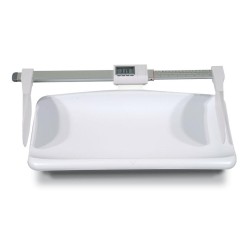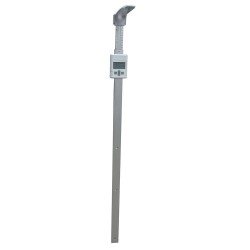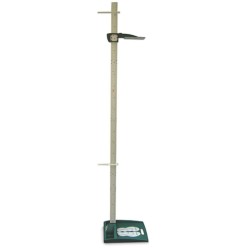Patient Height Measurers
There are 7 products.
Active filters
About Patient Height Measurers
Accurate Height Measurement for Clinical Assessment
Patient height measurers, also known as stadiometers, provide essential height measurement capabilities for healthcare facilities requiring accurate stature assessment, serving hospitals, GP surgeries, clinics, health centres, and healthcare facilities throughout England, Scotland, Wales, and Northern Ireland. These precision measuring devices feature vertical measuring rods with clearly marked height scales, adjustable horizontal headpieces ensuring accurate vertex measurement, stable mounting ensuring measurement consistency, and appropriate design preventing measurement errors. Healthcare environments rely on height measurers for applications including body mass index calculation requiring both height and weight data, growth monitoring in children tracking development, medication dosing calculations particularly for chemotherapy, nutritional assessment supporting dietary interventions, and clinical trials requiring precise anthropometric data. Modern height measurers incorporate features including large clear markings facilitating reading, smooth sliding headpieces enabling gentle measurement, metric and imperial scales accommodating preferences, and wall-mounted or portable designs matching different clinical settings. The provision of accurate height measurers supports evidence-based care through reliable anthropometric data, enables appropriate clinical calculations, and demonstrates professional clinical practice meeting measurement standards across professional healthcare environments.
The implementation of patient height measurers directly supports CQC compliance through accurate clinical assessment, comprehensive patient monitoring, and demonstration of appropriate equipment provision meeting professional healthcare standards. Inaccurate height measurement compromises clinical care through incorrect body mass index calculations potentially missing obesity or underweight conditions, inappropriate medication dosing particularly for chemotherapy where errors could cause serious harm, and compromised growth monitoring in children potentially missing significant developmental issues. Professional height measurers address these challenges by providing accurate consistent measurements, standardising technique through appropriate equipment design, enabling reliable serial measurements supporting clinical decision-making, and delivering professional patient experience. Clinical applications include BMI assessment screening for weight-related health risks, paediatric growth monitoring detecting developmental concerns, pre-operative assessment gathering baseline data, nutritional screening identifying malnutrition risks, and population health surveillance tracking anthropometric trends. Healthcare organisations benefit from reliable height measurement through confident clinical decision-making based on accurate data, reduced risks of medication dosing errors, and appropriate resource allocation through timely detection of growth or weight concerns. Modern height measurers incorporate features such as automatic measurement hold, integrated levelling mechanisms ensuring accuracy, and various mounting options throughout England, Scotland, Wales, and Northern Ireland.
Selecting and implementing patient height measurers requires assessment of clinical requirements, appropriate equipment specification, and establishment of quality measurement protocols across healthcare facilities throughout the UK. Organisations should evaluate patient populations determining required measurement range particularly if serving both children and adults, assess clinical requirements identifying needs for high precision versus basic measurement, and consider practical factors including available wall space, portability requirements, and budget constraints. Equipment selection should prioritise medical-grade stadiometers meeting measurement accuracy standards, appropriate measurement range typically 60-210cm covering most populations, clear scale markings readable in varied lighting, and robust construction ensuring long-term accuracy. Implementation protocols must encompass staff training on correct measurement technique including proper patient positioning with heels against wall, head in Frankfurt plane, and headpiece at vertex, measurement reading procedures avoiding parallax errors, and documentation approaches. Quality assurance measures should include periodic calibration checks comparing measurements to known standards, documented maintenance records, and monitoring of technique through observation or inter-rater reliability testing. Modern height measurers incorporate features such as digital displays eliminating reading errors, data connectivity transferring measurements to records, and portable designs enabling measurements in varied locations. Organisations should establish measurement protocols standardising technique across staff, determine appropriate measurement frequencies for different patient groups particularly children requiring regular growth monitoring, and integrate heights with weights for BMI calculation. Clinical teams should consider populations with specific needs including children requiring appropriate measurement range and technique, frail elderly patients needing support during measurement, and patients with spinal curvature requiring specialised measurement approaches. Staff education should address common measurement errors including incorrect patient positioning, reading parallax, and failure to achieve flat headpiece contact. By maintaining accurate patient height measurers and implementing professional measurement protocols, healthcare organisations throughout England, Scotland, Wales, and Northern Ireland demonstrate their commitment to CQC standards, accurate clinical assessment, comprehensive patient monitoring, and provision of reliable equipment supporting evidence-based care decisions through precise anthropometric measurement enabling appropriate clinical interventions and population health surveillance across all care settings.







